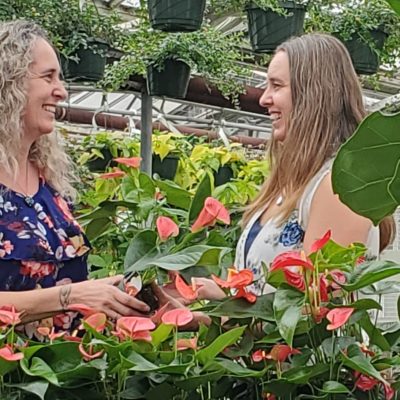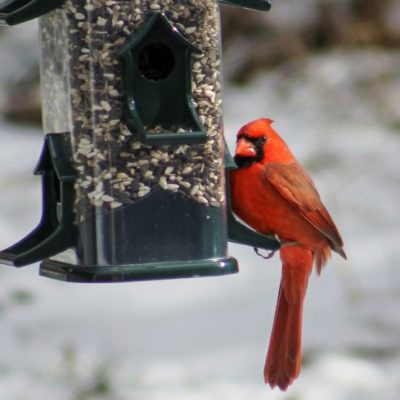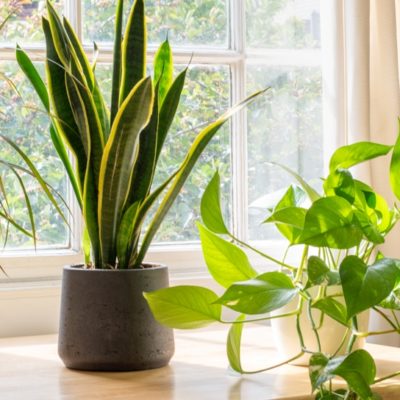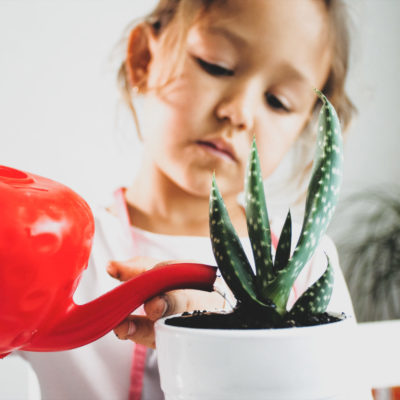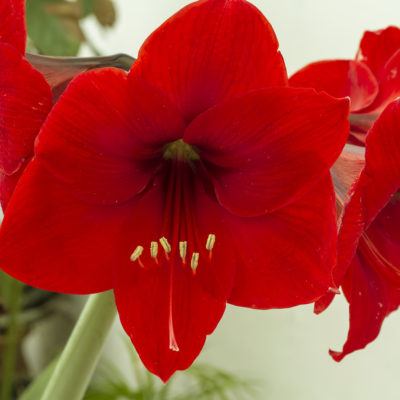
Tropical Houseplant Profile: Tropical Fern Family
If you’ve been looking for a tropical houseplant that has incredible foliage in a wide range of shapes and textures, look no further than the tropical Fern family. This family is HUGE and spans a wide range of environments and habitats; for this blog we’ll focus solely on the indoor varieties and leave the perennial outdoor garden types for another time. But even when we limit ourselves to tropical ferns, there are still way too many varieties to count so let’s get to it!
Some of our Favourite Tropical Fern Varieties:
Asparagus Fern: Technically not a fern! But it’s perfect for adding texture to any space, with its arching fronds of delicate green foliage. Plumosa Fern is even more delicate and airy!
Bird’s Nest Fern: Striking foliage! The wide leaves unfold from its centre like a green rosette! A close relative is the Crispy Wave Fern, which has a little extra ruffle to its fronds.
Boston Fern: This one’s dominated the Top Houseplants lists for decades! The arching, deep green fronds offer a full and lush appearance for that instant “indoor jungle” look. Kimberly Queen looks similar but with a more upright habit, and Fluffy Ruffle is exactly that – fluffy!
Button or Lemon Button Fern: So cute! Their arching fronds are covered with tiny, rounded leaves to add great texture to your collection. Lemon Button foliage has a slight citrusy fragrance.
Blue Star Fern: Delicate and long foliage with a gorgeous blue-green hue! This one’s perfect for adding a bit of colour interest to your fern collection.
Heart Fern: Low growing but still intriguing! The heart-shaped foliage also goes by the name “tongue fern”.
Kangaroo Fern: Perfect for hanging baskets, the name comes from the arching fronds that look like green kangaroo paws!
Maidenhair Fern: So soft! Delicate and airy only begins to describe these arching fronds of rounded, lush green foliage.
Rabbit’s Foot Fern: These get their name not from their fronds but from their roots! The hairy rhizomes pop up and over the pot’s edge for a soft and tactile treat!
Ribbon Fern: These often have a two-toned effect, offering long fingers of silvery leaves edged with deep green for a beautiful contrast.
Staghorn Fern: Not your typical fern! The giant toothy fronds do indeed look like antlers, so the name makes sense. They can have lower brown fronds that cover the bottom of the pot, which are actually the fern’s “feet” and are used to attach themselves to trees!
Please note: not all varieties will be available at all times as our selection changes constantly and quickly.
Caring for Your Indoor Ferns
Light: Most tropical Ferns prefer a bright location with indirect light (what we’d call “medium light”) so in a bright room placed some distance from a window, or close to a window with sheer curtains that filter any light entering the room. Some indoor ferns can handle more sunlight than others; check your pots and varieties to verify their preferred light levels.
Water: Most varieties like to stay evenly moist but not wet, so you don’t want to let them get too dry between deep waterings. Make sure to water from the top and aim for the soil; it’s easy for water to bounce right off those gorgeous fronds. They also love humidity so they’ll appreciate a good misting every day or even twice!
Fertilizer: Feed with an all-purpose fertilizer every 4th watering.
Temperature: Tropical Ferns don’t like to fluctuate, so try to keep them away from any hot or cold drafts including vents, baseboard heaters, or exterior doors that could blast them with a chill.
Cleaning: When needed, remove old yellowing leaves or just snip off the entire frond as close to the base as you can reach.
Fun Facts about Tropical Ferns!
- They are ancient! Some of the earliest discovered fossils are those of long extinct fern species, going back anywhere from 150 to 360 million years ago!
- There are over 10,000 different species of ferns, and those are just the ones we know of!
- Ferns belong to the Pteridophyta family, so to study ferns is to be a pteridologist.
- They don’t produce flowers or seeds, but reproduce using spores that drop off from the undersides of the fronds. Millions of spores can be scattered by the wind but only a small percentage will find the ideal conditions to survive.
- Many tropical varieties are epiphytes, attaching themselves to trees and other non-soil growing mediums. However they can survive and thrive quite happily in potting soil.
- People were crazy for ferns during the Victorian Era (1837-1901) and covered everything with the green fronds including artwork, furniture, pottery, paper, even gravestones!
- Finnish folklore says that if you find a seed of a “fern flower” on Midsummer’s Night, then you’ll be led to the secret treasure troves of the Will o’ the Wisps or aarnivalkea.

